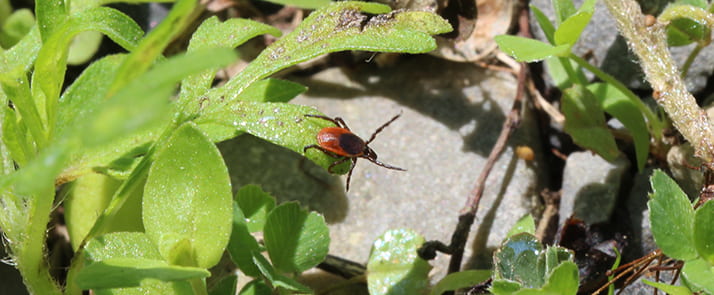Guest post #4 by Lynn Braband, retired from our NYSIPM Program but still part of the ‘family’. Lynn’s career experience with wildlife management AND IPM led him to prepare blog posts that addressed the issues faced by wildlife managers in protecting properties while promoting wildlife. Can managing damage also benefit wildlife conservation? In four posts,…Continue Reading The Balancing Act of Wildlife Management (Part Four) – Guest Post by Lynn Braband
The Balancing Act of Wildlife Management (Part Three) – Guest Post by Lynn Braband
Guest post #3 by Lynn Braband, retired from our NYSIPM Program but still part of the ‘family’. Lynn’s career experience with wildlife management AND IPM led him to prepare blog posts that addressed the issues faced by wildlife managers in protecting properties while promoting wildlife. Can managing damage also benefit wildlife conservation? In four posts,…Continue Reading The Balancing Act of Wildlife Management (Part Three) – Guest Post by Lynn Braband
The Balancing Act of Wildlife Management (Part Two) -Guest Post by Lynn Braband
SEE LYNN BRABAND’S Part One Post Earlier, I briefly surveyed how resolving human-wildlife conflict is important to wildlife conservation. Today, let’s look at the questions that wildlife damage professionals (and the general public) need to address when confronted with situations when wild animals come in conflict with human interests. This discussion is an adaption of…Continue Reading The Balancing Act of Wildlife Management (Part Two) -Guest Post by Lynn Braband
Moles! Guest (repost) by Dr. Paul Curtis
(We are posting this 2020 topic again as part of our Wildlife Management Series this week) Dealing with Mole Problems in Turfgrass Guest post by Paul D. Curtis, Department of Natural Resources and the Environment, Cornell University Moles are small, insect-eating mammals that are highly specialized for living underground. Unlike voles, moles have very small…Continue Reading Moles! Guest (repost) by Dr. Paul Curtis
Woodchucks! Guest Post by Dr. Paul Curtis
(this post is borrowed from our ABCs of School IPM Blog, October 2021, because we have follow-up posts from Guest Lynn Braband later this week!) “My enemies are worms, cool days, and most of all woodchucks.” – Henry David Thoreau Thank you to guest blogger Paul D. Curtis, Department of Natural Resources and the Environment,…Continue Reading Woodchucks! Guest Post by Dr. Paul Curtis
What Do Spotted Lanternfly Look Like?
SPOTTED LANTERNFLIES are named after flies, look like moths, but are actually planthoppers. They have piercing-sucking mouthparts which allow them to drill into the phloem of a plant to feed directly on the sugary sap—which comes out their other end as sticky, sweet honeydew. This planthopper is thought to have arrived as egg masses on…Continue Reading What Do Spotted Lanternfly Look Like?
Box Tree Moth -a MAJOR pest threat to Boxwood
Box Tree Moth a serious threat to plant health Box Tree Moth (BTM) first appeared in New York State in 2021, likely carried on a storm from an infestation just across the border in Ontario, Canada. Infestations have been identified in Niagara and Orleans county in 2023; the impacted range may expand through natural movement. The…Continue Reading Box Tree Moth -a MAJOR pest threat to Boxwood
Tick Bite Prevention – Dressing the Part – Rubber Boot Myth

When you see someone putting on his Big Boots, you can be pretty sure that an Adventure is going to happen. – A. A. Milne Last week I wrote a blog post on Tick Bite Prevention – Dressing the Part discussing why we make the recommendations we do. Today I want to address one commonly…Continue Reading Tick Bite Prevention – Dressing the Part – Rubber Boot Myth
Tick Bite Prevention – Dressing the Part

You can have anything you want in life if you dress for it. —Edith Head I don’t know about you, but what I want in life is to go outdoors and enjoy beautiful weather without contracting a life-changing illness. And, thank goodness, it IS possible. In the long list of items you can do to…Continue Reading Tick Bite Prevention – Dressing the Part
2019-2020 Annual Report: Ticks and Tick-Borne Diseases in New York
It’s more than the furtive crawling and sucking. Multiple tick species can carry multiple diseases. Prompted by an increasing number of tick-borne disease cases, Jody Gangloff-Kaufmann, Joellen Lampman, Elizabeth Lamb, and Matt Frye participated in an active surveillance project to determine risks to New Yorkers, their pets, and livestock. With the use of tick drags,…Continue Reading 2019-2020 Annual Report: Ticks and Tick-Borne Diseases in New York